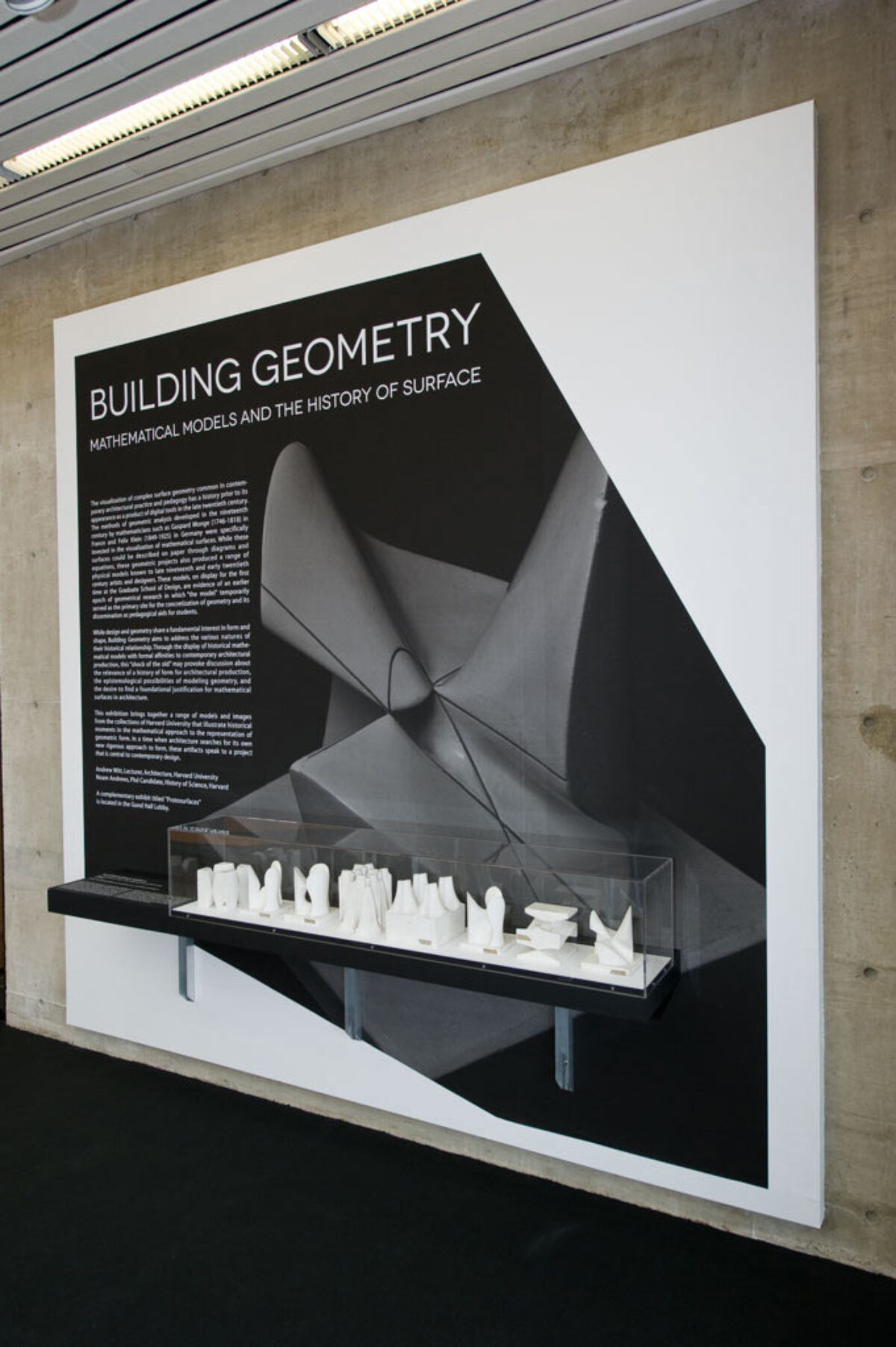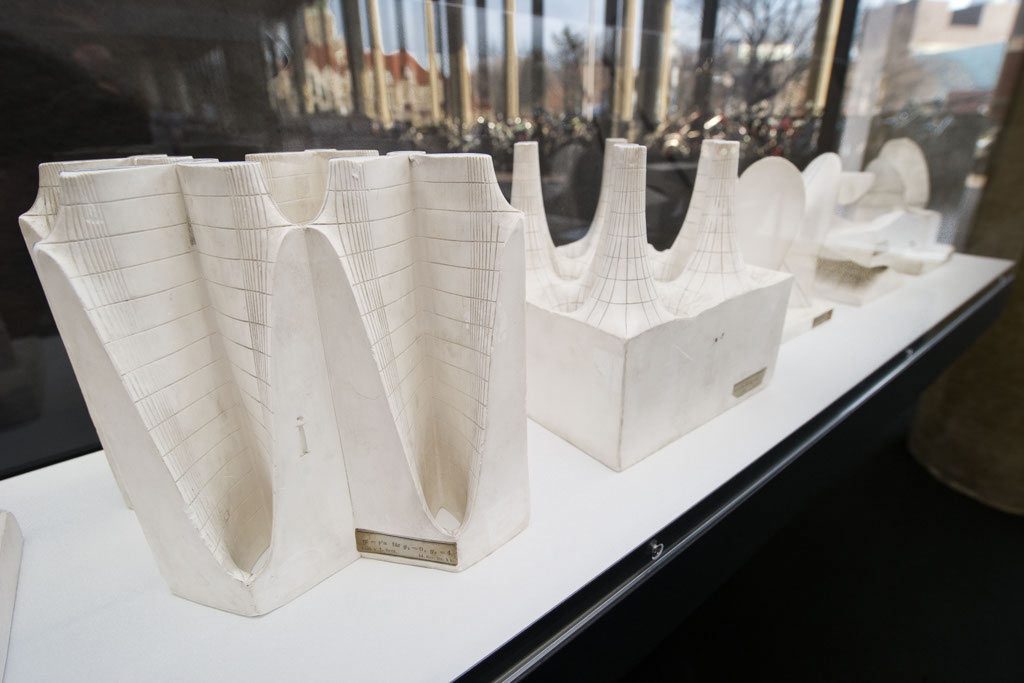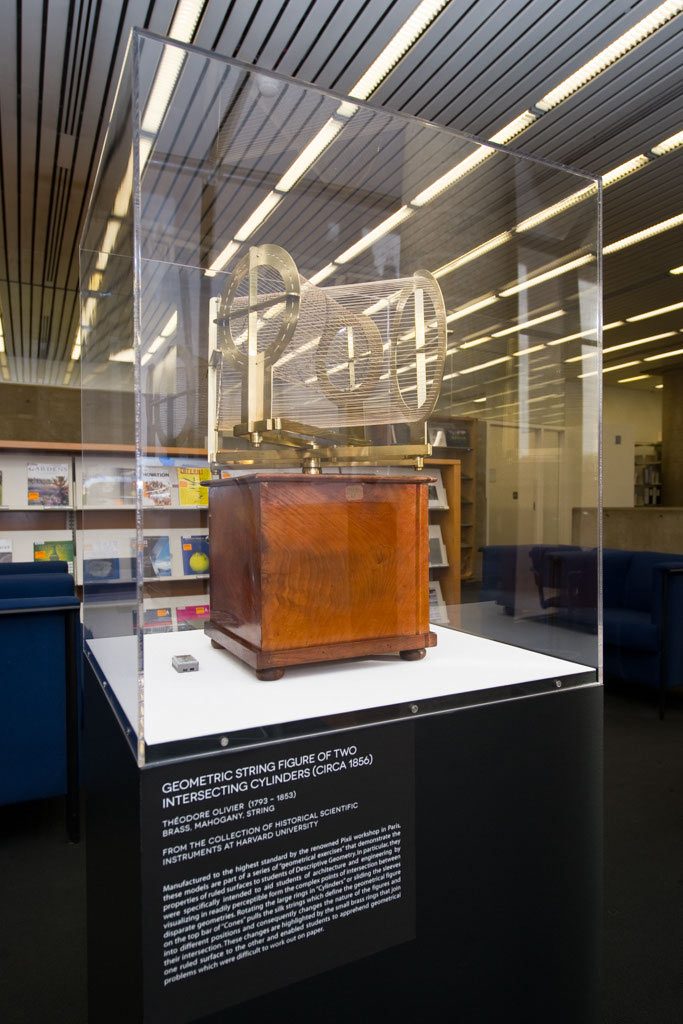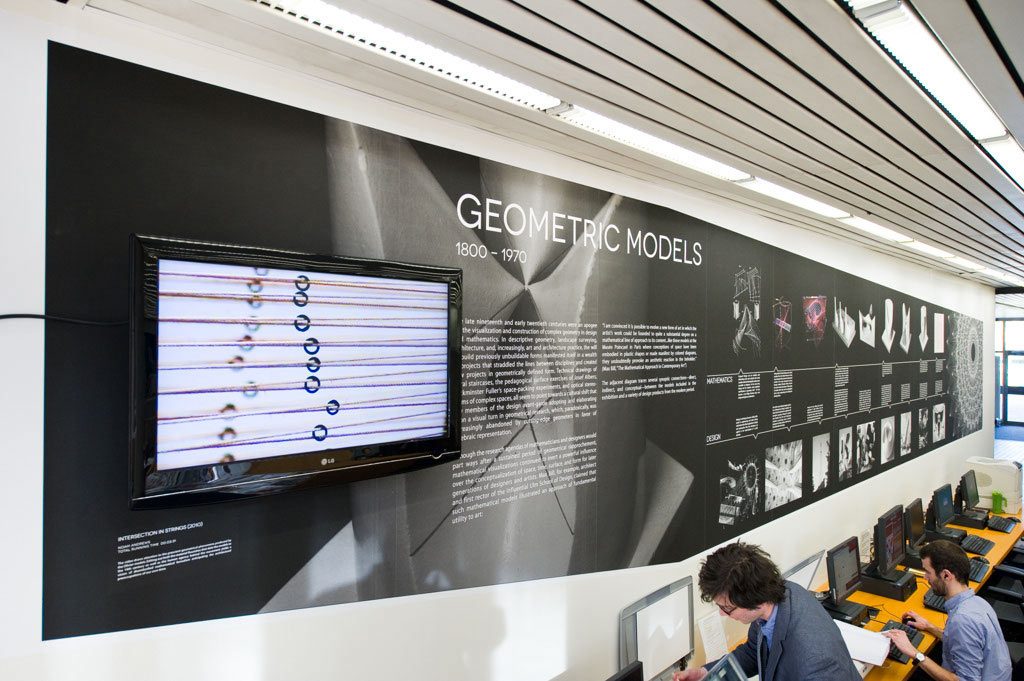Building Geometry: Mathematical Models and the History of Surface

The visualization of complex surface geometry common in contemporary architectural practice and pedagogy has a history prior to its appearance as a product of contemporary digital tools. The methods of geometric analysis developed in the nineteenth century by mathematicians such as Gaspard Monge (1746–1818) in France and Felix Klein (1849–1925) in Germany were specifically invested in the visualization of mathematical surfaces. While surfaces could be described on paper through diagrams and equations, geometric research also produced a range of physical models known to late nineteenth and early twentieth century artists and designers. These models, on display for the first time at the Graduate School of Design, are evidence of an earlier epoch in which the model served the impetus both to concretize geometry and to disseminate the teachings of descriptive geometry to wider audiences.
While design and geometry share a fundamental interest in form and shape, Building Geometry aims to address the various natures of their historical relationship. Through the display of historical mathematical models with formal affinities to contemporary architectural production, we hope the “shock of the old” will provoke discussion about the relevance of a history of form, the origins of design technique, the epistemology of geometry models, and the justification for mathematical surfaces in architecture.
This exhibition brings together a range of models and images from the collections of Harvard University that illustrate historical moments in the mathematical approach to the representation of geometric form. In a time when architecture searches for its own new rigorous approach to form, these artifacts speak to a project that is central to contemporary design.
Andrew Witt, Lecturer, Architecture, Harvard University
Noam Andrews, PhD Candidate, History of Science, Harvard University



